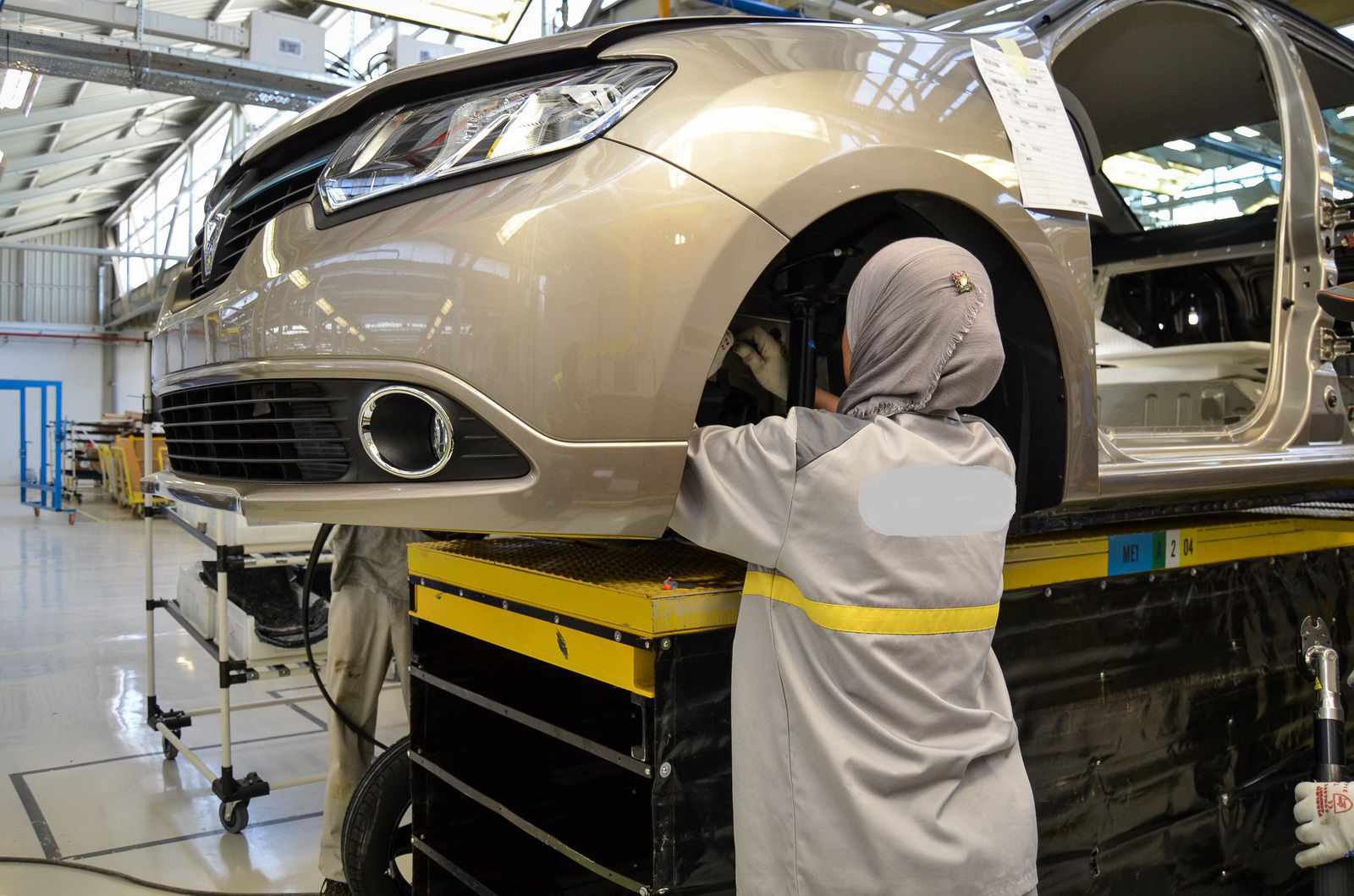
Rabat, Morocco –A study from BMI Research, part of Fitch Group, said that positive vehicle sales growth in the MENA region in 2017 is not entirely reflective of the ongoing weakness in many markets, particularly the GCC and Egypt, stressing that “bright spots include Morocco, where relative stability and growth in domestic production is fuelling sales of affordable vehicles.”
The study states that vehicle sales growth in the Middle East and North Africa (MENA) region will be the second-highest globally in 2017 at 4.2%, behind only Latin America. However, this positive growth follows an estimated contraction of 8.6% in 2016 and as such the regional market will still be underperforming, led by ongoing weakness in the markets of the Gulf Co-operation Council (GCC), which have traditionally been the strongest in the region.
Although the vehicle markets in the majority of GCC states will return to positive growth in 2017, they will still underperform the regional average and in the case of Saudi Arabia, the market will contract further. This means the upturn comes from markets such as Morocco, which is becoming a regional bright spot for both manufacturing and sales, and a slow return to sales growth for the Levant states .
As government spending will still be restricted in many countries by low oil income, we see passenger cars outperforming commercial vehicles in the MENA region, with growth of 4.6% and 2.9% respectively. Large scale investment projects will still be lower priorities heading into 2017 and as such, demand for heavy vehicles used in these projects will be muted.
Saudi Arabia Weighs On GCC Outlook
When stripped down into sub-regions, the GCC underperforms the MENA region as a whole considerably, with a second consecutive year of negative vehicle sales growth forecast for 2017. Sales will decline by 0.2% in 2017, which is a marked improvement on the 21.8% contraction estimated for 2016. However, another year of lower sales in Saudi Arabia will dampen GCC sales growth as we forecast a decline of 3.4% in the region’s biggest market.
The Saudi government’s austerity drive, which will include pay cuts for civil servants, as well as a drop in their car allowance, will see the new vehicle market’s recovery become more prolonged. The market will return to positive growth during the year, but only from mid-year onwards as the urgency to avoid VAT provides some momentum to sales in H2 2017. Declines in the earlier months will, however, keep the total year’s sales negative.
Other GCC markets will see similar pressures in terms of limited government spending, but not to the extent of Saudi Arabia, which is why we forecast the other markets to return to positive sales growth. It will not be the levels of growth that markets such as the UAE and Bahrain have been used to, however, and volumes will remain below their previous levels for the remainder of our forecast period to 2020.
Slow But Steady Growth In The Levant Markets
A gradual improvement in the security and economic backdrop for Jordan and Lebanon will be reflected in their respective new vehicle markets . In Jordan, where the market contracted 11.1% in 2015 and we estimate a further decline of 27.5% in 2016, there will be a 4.2% increase in sales . Given how far the market has already fallen, this is a relatively mild uptick and reflects the very gradual nature of the country’s recovery, driven largely by a return to trade with Iraq (see ‘Growth Accelerating From 2010-2016 Lows, But A Boom Is Off The Cards’, November 25).
One area where we do see potential for growth in Jordan is the electric vehicle segment. The country has made progress in several areas of EV adoption: creating incentives through import tax cuts; providing charging infrastructure; working with carmakers and adding EVs to public fleets .This enthusiasm for EVs is underpinned by a broader government strategy for clean energy, which has seen the EV segment supported by the growing solar sector. The government has a deal with US-based AllCell to install 3,000 solar-powered EV charging points over the next decade, which is a big move towards addressing range anxiety concerns (see ‘Jordan And Dubai Are Regional EV Bright Spots’, November 23).
Likewise, new vehicle sales in Lebanon will return to positive growth of 4.3% in 2017 after an estimated decline of 10.7% in 2016. One of the most positive developments in Lebanon has been the election of a new president in October, which ends two years of political uncertainty and should open up a period of private consumption growth as confidence improves . That said, we expect higher sales in the smaller, low cost car segments as new rules on retail loans limit the amount of credit available on car loans to 75% of the car’s price, making the more expensive cars less accessible to consumers buying on credit.
Egypt Limits North Africa Recovery
Vehicle sales in North Africa will decline 4.5% in 2017, led by the ongoing weakness in the Egyptian market where the poor economic backdrop is weighing on the consumer and vehicle producers alike. The picture for Algeria, Morocco and Tunisia is much more positive and supports our earlier view that the oil importers will largely be the best performers in the region (see ‘MENA Autos: Iranian Boom Masks Regional Weakness’, June 14). Without Egypt, we forecast vehicle sales in the other markets combined to grow 7.2% in 2017.
BMI forecast sales in Egypt to decline 24.2%, however, as the central bank’s decision in November to free float the pound and raise key interest rates will further erode consumer spending power and increase costs for producers . The weakened pound increases the costs of imported cars and components used in domestically produced vehicles, which means the gap in competitiveness between the two is increasingly narrow, leaving little affordable choice for consumers (see ‘Free-Floating Currency To Drag On Sales And Production In 2017’, November 7).
Morocco remains the region’s bright spot
Morocco remains the region’s bright spot based on its relatively positive economic outlook and stability, coupled with increasingly affordable vehicles resulting from the growth in domestic production. We forecast growth of 8.8% for 2017, on the back of an estimated 31% increase in sales in 2016. Increasing production will also be positive for Algeria where the government has been drastically reducing quotas for imported vehicles . Thanks to a low base, following an estimated contraction of 65% in 2016, and greater availability of locally made cars, we expect growth of 3.0% in 2017.
BMI Research.



![Morocco Suffers Defeat Against South Africa in African Nations Cup Qualifier [Highlights Included] Achraf Hakimi](https://themoroccantimes.com/wp-content/uploads/2023/04/achraf-hakimi-238x178.png)



